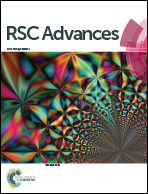Applications and potential mechanisms of herbal medicines for rheumatoid arthritis treatment: a systematic review†
Abstract
In this review, we systematically discuss the role of traditional Chinese medicine (TCM) in rheumatoid arthritis (RA) disease treatment. TCM classifies the subtypes of RA through its own theoretical method, which is beneficial for more accurate diagnosis and treatment with Chinese herbal medicines (CHMs) that are more suitable for different syndromes. TCM mainly uses a flexible combination of CHMs to play an important role in RA treatment. The main components of these extracts can be subdivided into alkaloids, flavonoids, triterpenes, saponins and other compounds. Using a platform of transgenic and induced arthritis models, we explore the potential mechanisms of TCM against RA with the help of omics analysis techniques and methods. These mechanisms are mainly CHM and its extracts can inhibit RA patients and experimental animal models, including synovitis, vascular proliferation and bone injury; this involves many biological signal exchange targets and pathways. In conclusion, the role of TCM in RA treatment mainly involves reducing the expression and secretion of pro-inflammatory factors, thus decreasing the degree of abnormal immune response.



 Please wait while we load your content...
Please wait while we load your content...